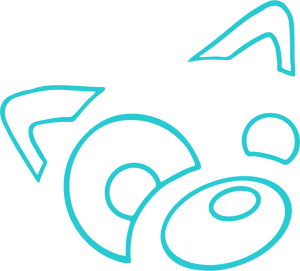What Does "Healthy Fat" Mean For Pets?
What Does Healthy Fat Mean for Pet Food?
If you’ve ever heard of the term “healthy fat” and weren't quite sure what it meant, you are not alone. Healthy fats, as a promotional term, are widely used to describe the nutrition of pet foods. But what does “healthy fat” mean? Are there bad fats? How do I know if my pet is getting “healthy fats”?
Here we provide some answers to these common questions!
Aren’t All Fats Bad?
No, fats are not inherently bad for you or your pet. Both dogs and cats (and humans) need fats in their diet! Fats are used throughout the body. They are incorporated into cell membranes to protect them.
The nervous system uses fats to transmit signals throughout the body. In addition, fats are used for other bodily processes such as muscle movement, hormones and hormonal signals, tissue and organ function, structure, protection, and maintaining a strong immune system.
They even help to absorb other beneficial nutrients!
So What Are Bad Fats?
Some fats are considered better than others. Trans fats are what we often deem bad or unhealthy fats. They are a byproduct created when oils are solidified and are often associated with fast food.
Studies have shown time and again that there are no health benefits to consuming trans fats. Trans fats are actually banned from many countries due to their negative health effects.
But What About Saturated Fats and Clogged Arteries?
While cats and dogs are very similar to humans when it comes to nutrition, there are some differences. And the effects of saturated fats on the body is one of them!
In humans, saturated fats are associated with clogged arteries and, subsequently, increased risks for heart disease. However, cats and dogs do not appear to react similarly to saturated fats.
Saturated fats do not clog arteries in cats and dogs, so saturated fats are less of a concern.
What Does a “Healthy Fat” Actually Refer To?
Polyunsaturated and monounsaturated fats or fatty acids are the fats that are marketed as “healthy fats” (think Omega-3 and Omega-6 fatty acids)!
Monounsaturated fats are found in olive oil, avocados, and nuts. They have been linked to heart health and reduced risks for heart disease.
Polyunsaturated fatty acids are actually essential. This means that you and your pet cannot make these fats in the body. Rather, they are required in the diet and necessary for normal body functions (i.e. cell membranes). These fats are found in other oils, fish, eggs, and some vegetables.
Why Are These Fatty Acids Considered Healthy?
Polyunsaturated and monounsaturated fatty acids are involved in the metabolism and use of fats in the body. They can help remove fat stores by encouraging the muscles to use fat as an energy source.
Omega-3 and omega-6’s are also thought to have anti-inflammatory effects on the body. This means they can help prevent damage from macrophages in the body. The anti-inflammatory effects may help to soothe sensitive stomachs, reduce skin conditions, and promote heart health by reducing the LDL (bad) cholesterol level.
How Do I Incorporate More Healthy Fats For My Pet?
Both cats and dogs can benefit from having polyunsaturated fatty acids in their diet. When looking at foods for your pet, look for ingredients that are excellent sources of omega-3’s!
These can include fish, anchovy oil, hemp seed oil, avocado, and nuts! We made sure to include these important oils in our new menu line for dogs! To view these new recipes click here.
It is usually recommended to provide an omega-6 to omega-3 ratio of three to one (3:1) or five to one (5:1) for health benefits.
Article written byHannah Godfrey
BSc H | MSc Animal Nutrition
Tom&Sawyer Client Ambassador & Animal Nutritionist


